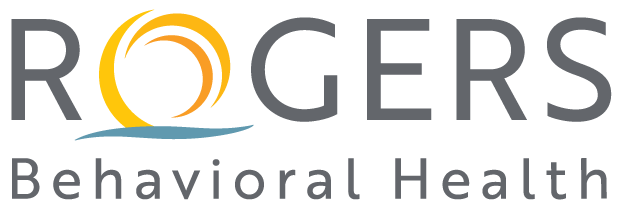
OCD & Anxiety Proven Outcomes
OCD and Anxiety Care at Rogers
We know that as hard as it is to live with OCD and anxiety, sometimes it’s even harder to ask for help. When you or your child are ready, we’re here with the most comprehensive treatment offerings available for kids, teens, and adults. Learn more.
Adult residential outcomes
Results
From June of 2012 until June of 2020, 599 adults in our residential services completed measures at both admission and discharge. 53% were female and the mean age was 29 years (SD=11.1).
Many of our patients participate in our long-term follow-up. Patients are contacted 12 months post discharge by phone and email. One year post discharge, the YBOCS scores maintain at the mild level with patients reporting (m=14.70, SD=8.25) and a fair to good quality of life (m=55.35, SD= 12.74).
Yale Brown Obsessive Compulsive Scale (YBOCS)
This 10-item measure rates the severity and type of symptoms. It measures both obsessions and compulsions and is used to monitor symptom improvement during treatment.
At time of admission to our residential care, individuals report severe OCD, as measured by the YBOCS (m= 27.0, SD=5.29); at time of discharge individuals report moderate levels of OCD (m= 17.0, SD=6.71). Utilizing paired sample t-tests, we find that these differences are statistically significant at the p< .001.
Scores range from 0 (no symptoms) to 40 (extreme symptoms). Patients scoring in the mild or higher range are likely experiencing a significant negative impact on their quality of life.
Severity Range:
- 0-7 = Subclinical
- 8-15 = Mild
- 16-23 = Moderate
- 24-31 = Severe
- 32-40 = Extreme
Quality of Life Enjoyment and Satisfaction Questionnaire
(Q-LES-Q)
This 16-item self-report measures the degree of enjoyment and satisfaction experienced in various areas of daily functioning. Composed of 14 general activity items and two additional items on medication satisfaction and overall life satisfaction item.
Additionally, patients have statistical improvements in quality of life, measured by the Q-LES-Q-SF. Patients admitted with a poor to fair quality of life (m=42.6, SD=15.9), and discharged with a fair to good quality of life (m=63.4, SD=16.8). This is significant at the p<.001.
Though there is not an industry standard for interpreting score results, Rogers uses the following categories to evaluate our patients’ assessment of their quality of life:
- 80 - very good
- 64 - good
- 48 - fair
- 32 - poor
- 16 - very poor
References:
-
Goodman, W.K; Price, L.H; Rasmussen, S.A; et al. (1989). "The Yale–Brown Obsessive–Compulsive Scale. I. Development, use, and reliability". Arch Gen Psychiatry. 46 (11): 1006–1011
-
Endicott, J., Nee, J., Harrison, W., & Blumenthal, R. (1993). Quality of Life Enjoyment and Satisfaction Questionnaire: a new measure. Psychopharmacology bulletin.
Adult partial hospitalization outcomes
Results
Across Rogers’ OCD partial hospitalization care across the country, we see a consistent level of improvement at all of our sites. From June of 2012 until February of 2020, 1050 adults who were admitted to our partial hospitalization care, completed measures at both admission and discharge. 55% were female and the mean age was 30 years (SD=11.6). The average number of treatment days in partial hospitalization care is 19 days.
Yale Brown Obsessive Compulsive Scale (YBOCS)
This 10-item measure rates the severity and type of symptoms. It measures both obsessions and compulsions and is used to monitor symptom improvement during treatment.
At time of admission, individuals report moderate OCD, as measured by the YBOCS (m= 25.1, SD=5.02); at time of discharge individuals report mild levels of OCD (m= 15.9, SD=6.85). Utilizing paired sample t-tests, we find that these differences are statistically significant at the p< .001.
Scores range from 0 (no symptoms) to 40 (extreme symptoms). Patients scoring in the mild or higher range are likely experiencing a significant negative impact on their quality of life.
Severity Range:
- 0-7 = Subclinical
- 8-15 = Mild
- 16-23 = Moderate
- 24-31 = Severe
- 32-40 = Extreme
Quality of Life Enjoyment and Satisfaction Questionnaire (Q-LES-Q)
This 16-item self-report measures the degree of enjoyment and satisfaction experienced in various areas of daily functioning. Composed of 14 general activity items and two additional items on medication satisfaction and overall life satisfaction item.
Additionally, patients have statistical improvements in quality of life, measured by the Q-LES-Q-SF. Patients admitted with a poor to fair quality of life (m=44.50, SD=15.8), and discharged with a fair to good quality of life (m=60.60, SD=17.3). This is significant at the p<.001.
Though there is not an industry standard for interpreting score results, Rogers uses the following categories to evaluate our patients’ assessment of their quality of life:
- 80 - very good
- 64 - good
- 48 - fair
- 32 - poor
- 16 - very poor
References:
-
Goodman, W.K; Price, L.H; Rasmussen, S.A; et al. (1989). "The Yale–Brown Obsessive–Compulsive Scale. I. Development, use, and reliability". Arch Gen Psychiatry. 46 (11): 1006–1011
-
Endicott, J., Nee, J., Harrison, W., & Blumenthal, R. (1993). Quality of Life Enjoyment and Satisfaction Questionnaire: a new measure. Psychopharmacology bulletin.
Adolescent residential outcomes
Results
From February of 2015 until April of 2021, 432 adolescents admitted to our residential care completed measures at both admission and discharge. 51% were female and the mean age was 16 years (SD=1.12).
Many of our patients participate in our long term follow-up and are contacted one year post discharge by phone and email. Twelve months post discharge, the CYBOCS scores maintain at the mild level with patients reporting (m=12.18, SD=12.28) and a fair to good quality of life (m=56.45, SD= 14.22). The slight regressions are not statistically significant at follow-up.
Children's Yale Brown Obsessive Compulsive Scale (CYBOCS)
This 10-item measure rates the severity and type of symptoms. It measures both obsessions and compulsions and is used to monitor symptom improvement during treatment.
At time of residential care admission, individuals report moderate OCD, as measured by the CYBOCS (m= 25.2, SD=5.06); at time of discharge individuals report mild levels of OCD (m= 12.9, SD=6.49). Utilizing paired sample t-tests, we find that these differences are statistically significant at the p< .001.
Scores range from 0 (no symptoms) to 40 (extreme symptoms). Patients scoring in the mild or higher range are likely experiencing a significant negative impact on their quality of life.
Severity Range:
- 0-7 = Subclinical
- 8-15 = Mild
- 16-23 = Moderate
- 24-31 = Severe
- 32-40 = Extreme
Pediatric Quality of Life Enjoyment and Satisfaction Questionnaire (PQ-LES-Q)
This 15-item self-report measure is designed to measure the degree of enjoyment and satisfaction experienced by child and adolescent patients in various areas of daily functioning. Higher scores indicate great enjoyment and satisfaction.
Additionally, patients have statistical improvements in quality of life, measured by the PQ-LES-Q-SF. Patients admitted with a poor to fair quality of life (m=50.2, SD=16.3), and discharged with a fair to good quality of life (m=71, SD=15.9). This is significant at the p<.001.
Though there is not an industry standard for interpreting score results, Rogers uses the following categories to evaluate our patients’ assessment of their quality of life:
- 80 - very good
- 64 - good
- 48 - fair
- 32 - poor
- 16 - very poor
References:
-
Scahill, L., Riddle, M.A., McSwiggin-Hardin, M., Ort, S.I., King, R.A., Goodman, W.K., Cicchetti, D. & Leckman, J.F. (1997). Children's Yale-Brown Obsessive Compulsive Scale: reliability and validity. J Am Acad Child Adolesc Psychiatry, 36(6):844-852.
-
Endicott J, Nee J, Yang R, et al. Pediatric Quality of Life Enjoyment and Satisfaction Questionnaire (PQ-LES-Q): reliability and validity. J Am Acad Child Adolesc Psychiatry2006;45:401–7.
Child residential outcomes
Results
From September of 2015 until February of 2020, 131 children who were admitted to our residential care completed measures at both admission and discharge. 66% were female and the mean age was 12 years (SD=1.2).
Many of our patients participate in our long term follow-up and are contacted one year post discharge by phone and email. Twelve months post discharge, the CYBOCS scores maintain at the mild level with patients reporting (m=12.18, SD=7.7).
Children's Yale Brown Obsessive Compulsive Scale (CYBOCS)
This 10-item measure rates the severity and type of symptoms. It measures both obsessions and compulsions and is used to monitor symptom improvement during treatment.
At time of admission to the residential programs, children report moderate OCD, as measured by the CYBOCS (m= 24.9, SD=5.93); at time of discharge individuals report mild levels of OCD (m= 9.9, SD=6.97). Utilizing paired sample t-tests, we find that these differences are statistically significant at the p< .001.
Scores range from 0 (no symptoms) to 40 (extreme symptoms). Patients scoring in the mild or higher range are likely experiencing a significant negative impact on their quality of life.
Severity Range:
- 0-7 = Subclinical
- 8-15 = Mild
- 16-23 = Moderate
- 24-31 = Severe
- 32-40 = Extreme
Pediatric Quality of Life Enjoyment and Satisfaction Questionnaire (PQ-LES-Q)
This 15-item self-report measure is designed to measure the degree of enjoyment and satisfaction experienced by child and adolescent patients in various areas of daily functioning. Higher scores indicate great enjoyment and satisfaction.
Additionally, patients have statistical improvements in quality of life, measured by the PQ-LES-Q-SF. Patients admitted with a fair quality of life (m=54.1, SD=17), and discharged with a fair to good quality of life (m=74.5, SD=15.5). This is significant at the p<.001.
Though there is not an industry standard for interpreting score results, Rogers uses the following categories to evaluate our patients’ assessment of their quality of life:
- 80 - very good
- 64 - good
- 48 - fair
- 32 - poor
- 16 - very poor
References:
-
Scahill, L., Riddle, M.A., McSwiggin-Hardin, M., Ort, S.I., King, R.A., Goodman, W.K., Cicchetti, D. & Leckman, J.F. (1997). Children's Yale-Brown Obsessive Compulsive Scale: reliability and validity. J Am Acad Child Adolesc Psychiatry, 36(6):844-852.
-
Endicott J, Nee J, Yang R, et al. Pediatric Quality of Life Enjoyment and Satisfaction Questionnaire (PQ-LES-Q): reliability and validity. J Am Acad Child Adolesc Psychiatry2006;45:401–7.
Child and adolescent partial hospitalization outcomes
Results
Across the Rogers system in multiple Child and Adolescent OCD partial hospitalization care locations, we see a consistent level of improvement at all of our sites. From February of 2016 until February of 2020, 753 children and adolescents admitted to our partial hospitalization care, completed measures at both admission and discharge. 58% were female and the mean age was 13.9 years (SD=2.56). The average number of treatment days in partial hospitalization care is 21 days.
Children's Yale Brown Obsessive Compulsive Scale (CYBOCS)
This 10-item measure rates the severity and type of symptoms. It measures both obsessions and compulsions and is used to monitor symptom improvement during treatment.
At time of admission to our partial hospitalization care individuals report moderate OCD, as measured by the CYBOCS (m= 24.6, SD=5.18); at time of discharge individuals report mild levels of OCD (m= 14.7, SD=7.52). Utilizing paired sample t-tests, we find that these differences are statistically significant at the p< .001.
Scores range from 0 (no symptoms) to 40 (extreme symptoms). Patients scoring in the mild or higher range are likely experiencing a significant negative impact on their quality of life.
Severity Range:
- 0-7 = Subclinical
- 8-15 = Mild
- 16-23 = Moderate
- 24-31 = Severe
- 32-40 = Extreme
Pediatric Quality of Life Enjoyment and Satisfaction Questionnaire (PQ-LES-Q)
This 15-item self-report measure is designed to measure the degree of enjoyment and satisfaction experienced by child and adolescent patients in various areas of daily functioning. Higher scores indicate great enjoyment and satisfaction.
Additionally, patients have statistical improvements in quality of life, measured by the PQ-LES-Q-SF. Patients admitted with a fair quality of life (m=54.8, SD=16.5), and discharged with a fair to good quality of life (m=68.2, SD=17.2). This is significant at the p<.001.
Though there is not an industry standard for interpreting score results, Rogers uses the following categories to evaluate our patients’ assessment of their quality of life:
- 80 - very good
- 64 - good
- 48 - fair
- 32 - poor
- 16 - very poor
References:
-
Scahill, L., Riddle, M.A., McSwiggin-Hardin, M., Ort, S.I., King, R.A., Goodman, W.K., Cicchetti, D. & Leckman, J.F. (1997). Children's Yale-Brown Obsessive Compulsive Scale: reliability and validity. J Am Acad Child Adolesc Psychiatry, 36(6):844-852.
-
Endicott J, Nee J, Yang R, et al. Pediatric Quality of Life Enjoyment and Satisfaction Questionnaire (PQ-LES-Q): reliability and validity. J Am Acad Child Adolesc Psychiatry2006;45:401–7.
OCD and Anxiety Success Stories
Rising Above OCD and Anxiety | Jill's Story
Jill says she always had anxious tendencies, but she lacked the language to talk about it. As she got older, intrusive thoughts were becoming too ... Read More
Proven Treatment Outcomes
View the other treatment outcomes by specialty
Next Steps

OCD and anxiety care
We know that as hard as it is to live with OCD and anxiety, sometimes it’s even harder to ask for help. When you or your child are ready, we’re here.

OCD and anxiety screening
A specialist will, at no charge, recommend the appropriate level of care over the phone.

Wondering if you might have obsessive compulsive disorder?
Take a short quiz to learn more.
